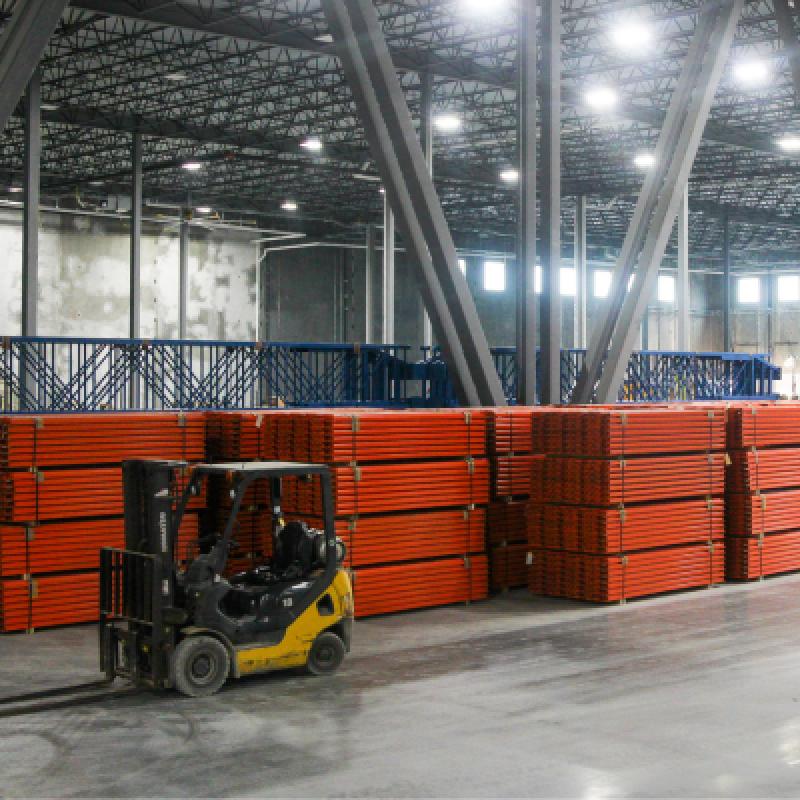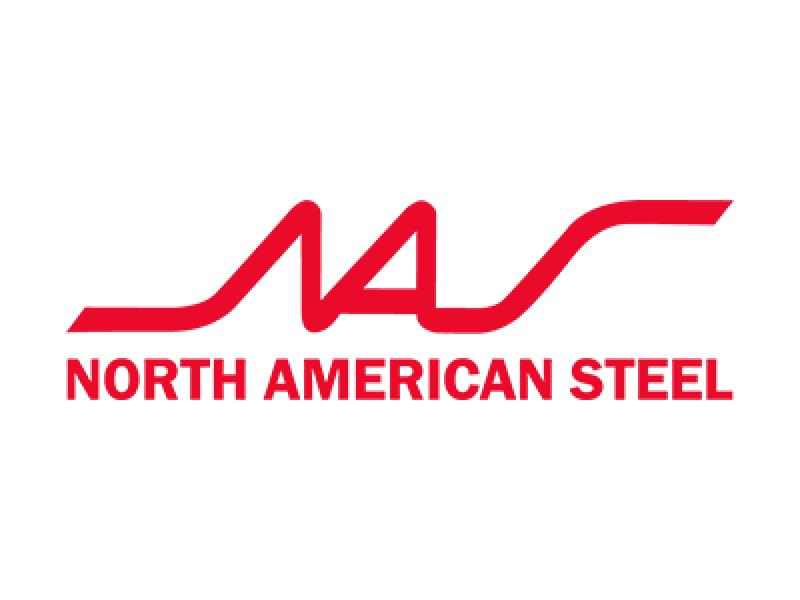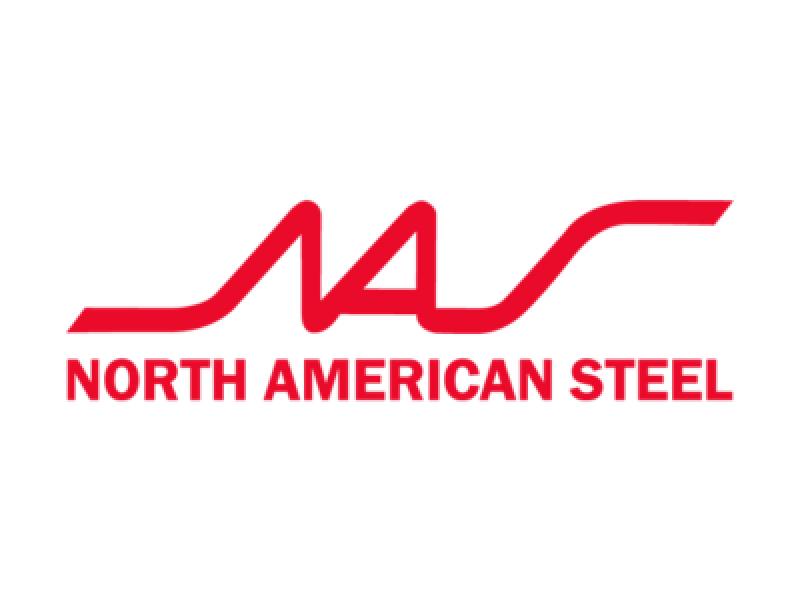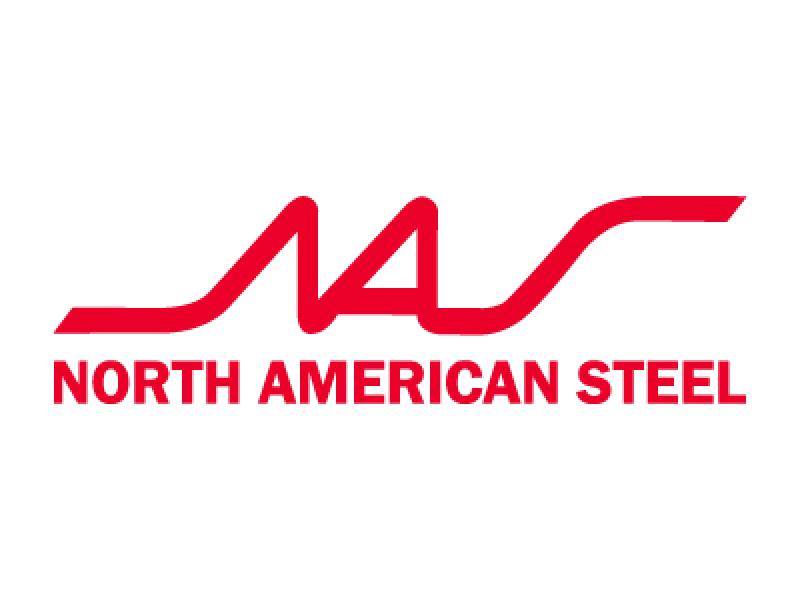
In commercial and industrial real estate, location, clear height, dock access, and floor loads often drive the conversation.
But increasingly, racking—yes, the storage infrastructure itself—is becoming a deciding factor in a property's long-term viability. For brokers and developers, overlooking how racking fits into a space can be a costly misstep.
A recent video by North American Steel titled “Inside a Racking Project: Start to Finish” pulls back the curtain on what actually goes into designing and delivering a successful racking system. It’s more than just steel and bolts—it's engineering, compliance, workflow planning, and coordination. And it all begins long before a tenant takes possession.
Racking: The backbone of modern warehousing
In today’s logistics-driven economy, industrial tenants expect to hit the ground running. The moment a lease is signed, they’re thinking about how to maximize every cubic foot. A well-executed racking system is essential, and not just for storage, but for operational efficiency, safety, and compliance with fire codes and building standards.
But that system doesn’t materialize overnight. It requires weeks or months of planning, site visits, engineering, permitting, and alignment with other trades. What many brokers don’t realize is that the racking vendor often becomes the most embedded partner during the fit-out phase—working directly with architects, contractors, inspectors, and the client’s logistics team.
A closer look at the “Quote to Completion” process
The video outlines a typical racking project lifecycle:
- Consultation & site review: What are the tenant’s storage needs? What’s the clear height, slab rating, sprinkler type?
- Design & engineering: CAD layouts and load calculations uncover potential conflicts, inefficiencies, and compliance risks early.
- Permitting & compliance: In Ontario and beyond, racking requires engineer-stamped drawings and adherence to seismic, fire, and OHSA codes. A racking partner navigates this process alongside inspectors and consultants.
- Manufacturing & lead times: With ongoing supply chain pressures, locking in design specs early is crucial to avoid delays.
- Delivery & installation: Installations must be timed with other trades, ensure safety compliance, and pass final sign-offs.
Each step involves coordination, documentation, and problem-solving. That’s why early collaboration between brokers, tenants, and racking experts is critical to keeping move-ins on schedule.
What real estate professionals can do differently
Too often, racking is treated as an afterthought that is tackled only after lease execution. That creates ripple effects: delays in occupancy, rushed approvals, and costly rework.
Forward-thinking agents are shifting that mindset. By engaging a racking manufacturer early, even during site selection or LOI stages, they can:
- Enhance client trust through operational foresight
- Prevent delays by starting the permitting process early
- Help tenants visualize space potential with layout options
- Avoid dealbreakers by identifying design limitations upfront
This isn’t about selling racking. It’s about helping tenants succeed in the space and positioning yourself as a strategic advisor, not just a space broker.
Vacancies are rising — so broker value must too
The leasing environment today is very different from the pandemic-era boom. Back then, tenants were signing leases at record speed amid low supply and rising demand.
Now, tenants are more cautious. Inventory is up, rents remain high, and spaces are sitting vacant longer. Decision cycles have slowed. Clients are scrutinizing every dollar and every square foot more closely.
This shift gives real estate professionals a unique opportunity to stand out. By helping clients evaluate space not just by size, but by functionality—including racking and material flow—brokers can demonstrate added value and deepen client trust.
Providing concept layouts, pointing out space efficiencies, or even flagging sprinkler and load rating issues early shows that you’re thinking like a partner, not a salesperson.
The strategic advantage of a racking partner
North American Steel, the Canadian manufacturer behind the “Inside a Racking Project” video, partners with developers, brokers, and facility managers across the country. As both manufacturer and service provider, they control every phase: design, engineering, manufacturing, and install. That streamlines accountability and eliminates middlemen.
“Our goal isn’t to just sell racking,” says Mike Tripp, VP of Operations at North American Steel. “It’s to help tenants succeed in their space and help agents close better deals by offering real operational insight.”
Working with a racking partner also enhances listing presentations. Need a concept layout for a 100,000 sq. ft. warehouse with 40' clear height? A racking expert can generate that quickly—giving prospects a clearer sense of how the space performs, not just how big it is.
Racking strategy by building type
Whether you're marketing a multi-tenant building, spec project, or build-to-suit facility, racking should be part of the early conversation.
Multi-tenant buildings:
Each tenant has unique storage and flow needs. Brokers can work with a racking expert to provide layout options that help prospective tenants visualize and compare racking strategies before signing.
Spec builds:
Early involvement from a racking partner helps developers optimize design choices like slab ratings, column spacing, and sprinkler coverage for a wide range of potential tenants. Pre-permitting standard racking configurations can also shorten occupancy timelines.
Build-to-suit projects:
Here, racking strategy should shape the facility itself. Racking affects ceiling height, lighting, HVAC, and flow. Engaging a racking manufacturer during the design phase ensures fewer surprises and a more efficient final layout.
In all scenarios, bringing in a racking expert early helps deliver a faster, more functional build and gives brokers more strategic tools to win and retain clients.
Final thoughts: It’s time to rethink racking
Industrial real estate continues to evolve. E-commerce, automation, and new logistics models are reshaping how space is used—and it all begins with storage.
By factoring racking into the early stages of site selection and leasing, brokers can differentiate themselves, reduce risk, and support long-term tenant success.
As the “Inside a Racking Project” video shows, there’s a lot more to racking than meets the eye. But for those who understand its role, it becomes a strategic advantage, not just a detail.









